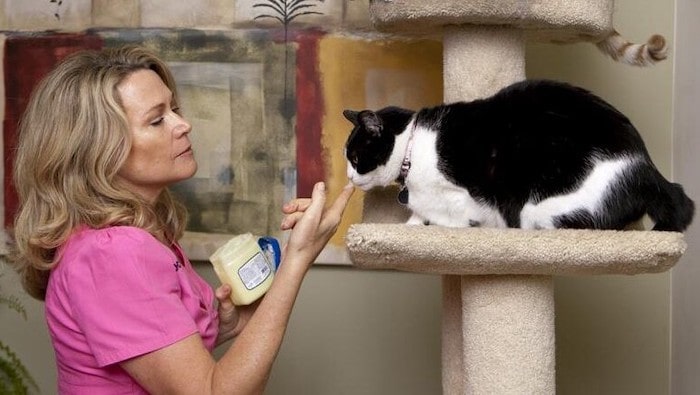Cats are curious creatures known for their peculiar eating habits. As feline guardians, it’s our responsibility to ensure their safety and well-being, which includes being mindful of the substances they come into contact with.
One such common household item that may pique our curiosity is Vaseline. This petroleum jelly product has been a staple in many homes for its various uses, but when it comes to our feline companions, it’s crucial to ask the question: Can cats eat Vaseline?
In this comprehensive guide, we will delve into the topic, exploring the potential risks and benefits associated with cats ingesting Vaseline. By gaining a better understanding of this issue, we can make informed decisions and prioritize our furry friends’ health and happiness.
So, let’s unravel the mystery and discover the truth about cats and Vaseline consumption.
What is Vaseline and How Does It Work?
Vaseline is a brand name for petroleum jelly, which is a mixture of waxes and mineral oils derived from petroleum distillation. Petroleum jelly was discovered by American chemist Robert Chesebrough in 1859, when he noticed that oil workers used a residue called “rod wax” to heal their burns and cuts. He extracted and purified the substance and named it “Wonder Jelly”, which he later trademarked as Vaseline.
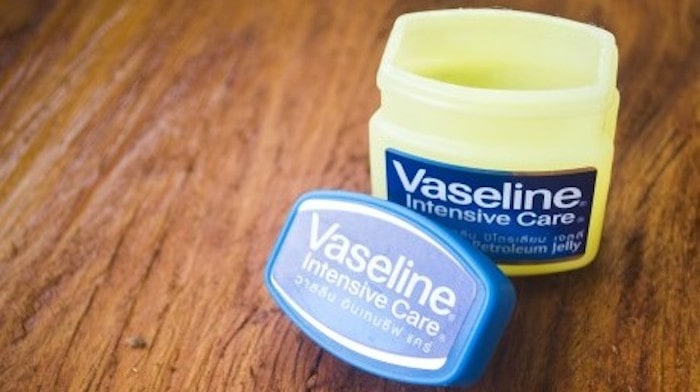
Vaseline is a type of hydrocarbon, which means it is composed mainly of carbon and hydrogen atoms. It has a high viscosity, which means it is very thick and sticky. It does not absorb into surfaces, but forms a protective layer on them. This makes it useful as a moisture barrier and a lubricant.
Vaseline has no nutritional value and is minimally absorbed by the gut. When given by mouth, it acts as a laxative because it lubricates the stools and the intestinal lining. It can also coat the fur and hairballs in the digestive tract, making them easier to pass.
Vaseline has many benefits for humans and pets, such as:
- Healing minor burns and cuts
- Reducing crow’s feet and removing eye makeup
- Moisturizing pet’s paw pads
- Lubricating squeaky doors or rings stuck on fingers
- Preventing diaper rash
- Moisturizing face, hands, and body
- Preventing skin stains when dyeing hair or putting on nail polish
- Helping with split ends in hair and adding shine
Is Vaseline Toxic for Cats?
The short answer is no. Vaseline is not considered toxic for cats as long as it is ingested in small doses. It does not contain any cancer-causing substances because it has been triple-purified. However, there are some risks associated with giving Vaseline to your cat, depending on the type of Vaseline, your cat’s health and age, and how much and how often your cat consumes it.
The main risk of giving Vaseline to your cat is causing digestive upset or diarrhea. Vaseline has no nutritional value and is minimally absorbed by the gut. It can interfere with the absorption of fat-soluble vitamins and essential fatty acids. Vaseline can also coat the stomach lining and reduce appetite or cause nausea.
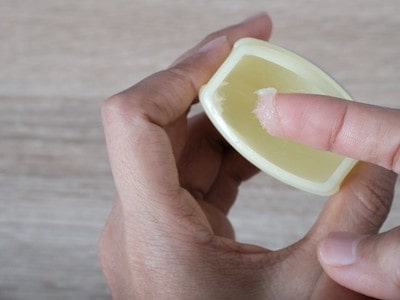
Another risk of giving Vaseline to your cat is aspiration pneumonia, which can happen if your cat inhales liquid paraffin into the lungs. Liquid paraffin is a thinner form of petroleum jelly that should never be given to your cat orally or rectally without veterinary supervision. Aspiration pneumonia can cause coughing, breathing difficulties, fever, and even death if not treated promptly.
Therefore, you should only give Vaseline to your cat if you have a good reason to do so, such as treating hairballs. And even then, you should only give a small amount (about half a teaspoon) once or twice a week at most.
You should also monitor your cat’s stool and appetite for any changes or signs of distress. You should never force-feed your cat Vaseline or put it on their paws or fur. This can cause stress or injury to your cat or make them ingest more than necessary.
How Can Vaseline Help with Hairballs in Cats?
Hairballs are clumps of fur that accumulate in the stomach or intestines of cats due to grooming. Cats groom themselves by licking their fur with their tongue, which has tiny barbs that catch loose hairs. These hairs are swallowed and usually pass through the digestive system without any problem. However, sometimes they get stuck together and form hairballs, which can cause various issues for cats.
Hairballs can cause vomiting, constipation, loss of appetite, and intestinal blockage in cats. These symptoms can be distressing for both cats and their owners. Hairballs are more common in long-haired cats, cats that shed excessively, cats that groom themselves or other cats too much, and cats that have digestive problems.
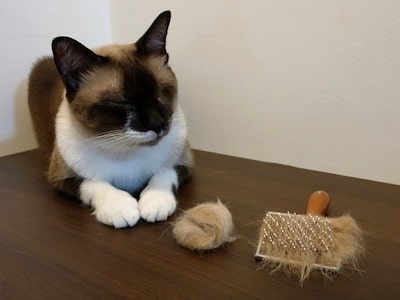
Vaseline can help prevent or treat hairballs by coating the fur and making it easier to pass through the digestive system. Vaseline can also lubricate the stools and the intestinal lining, making them softer and smoother. This can reduce the risk of constipation and blockage caused by hairballs.
However, Vaseline is not a cure-all for hairballs. It should be used only as a temporary measure or as directed by a vet. There are other ways to prevent or treat hairballs in cats, such as:
- Brushing your cat regularly to remove loose hairs
- Feeding your cat a high-fiber diet or a special hairball formula
- Giving your cat supplements or treats that contain natural ingredients that help dissolve hairballs
- Providing your cat with plenty of fresh water to keep them hydrated
- Keeping your cat active and stimulated to reduce stress and boredom
How to Use Vaseline Safely and Effectively for Cats?
To use Vaseline safely and effectively for cats, follow these tips:
- Choose the right product: Use only plain white petroleum jelly (Vaseline) that does not contain any additives, fragrances, colors, or flavors. Avoid liquid paraffin products that are more likely to cause aspiration pneumonia.
- Consult with a vet: Always check with your vet before giving Vaseline to your cat. Your vet can advise you on the appropriate dose, frequency, duration, and method of administration for your cat’s specific needs and conditions.
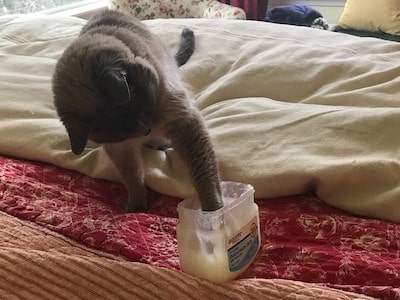
- Administer carefully: Use a syringe or a finger to gently place a small amount of Vaseline on your cat’s tongue or roof of the mouth. Do not force your cat to swallow or inhale it. Avoid giving it right before or after meals or medications.
- Monitor your cat: Observe your cat for any signs of improvement or adverse reactions after giving Vaseline. If your cat vomits, has diarrhea, loses appetite, becomes lethargic, or shows any other signs of distress, contact your vet immediately.
FAQ
Are there any safe alternatives to Vaseline for cats?
Yes, there are alternative products specifically designed for cats, such as pet-safe paw balms or moisturizers. These products are formulated to be safe for feline use and can help moisturize dry or cracked paw pads without posing a risk to their health.
Can Vaseline be harmful if applied topically on a cat?
When used topically in small amounts and under the guidance of a veterinarian, Vaseline can be safe for certain purposes such as moisturizing dry skin or protecting minor wounds. However, excessive or improper application may cause skin irritation or the risk of ingestion if the cat licks the area.
Is there any circumstance where Vaseline may be used for cats under veterinary guidance?
In specific cases, a veterinarian may recommend the limited and controlled use of Vaseline for cats, such as in cases of severe constipation where a small amount is administered orally as a lubricant. However, this should only be done under professional supervision and guidance.
How can I protect my cat’s paws from dryness without using Vaseline?
There are alternative cat-friendly products available, such as paw balms or moisturizers specifically formulated for feline use. These products are designed to provide moisturization and protect your cat’s paws without the potential risks associated with Vaseline.
Conclusion
In conclusion, the question of whether cats can eat Vaseline leads us to the clear understanding that it is not safe or recommended for feline consumption. While Vaseline may be harmless to humans and have multiple uses in our daily lives, it poses potential risks to cats when ingested.
The petroleum-based nature of Vaseline can act as a laxative and disrupt a cat’s digestive system, leading to gastrointestinal issues and possible obstructions.
As responsible cat owners, it is crucial to prioritize our feline friends’ well-being and ensure their safety. Instead of using Vaseline, it is advisable to explore cat-specific alternatives for moisturizing their paws or addressing dry skin issues.
Paw balms or moisturizers formulated for cats offer a safer option that meets their unique needs without compromising their health.

